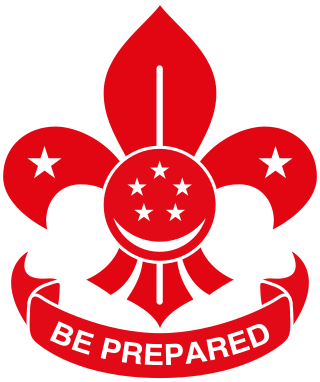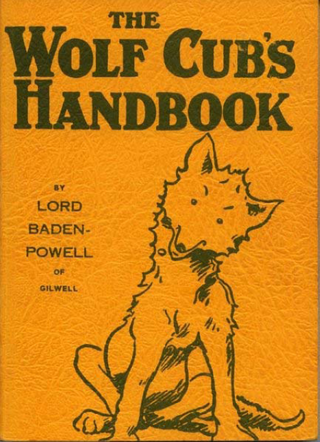
Scouting, also known as the Scout Movement, is a worldwide youth movement employing the Scout method, a program of informal education with an emphasis on practical outdoor activities, including camping, woodcraft, aquatics, hiking, backpacking, and sports. Another widely recognized movement characteristic is the Scout uniform, by intent hiding all differences of social standing in a country and encouraging equality, with neckerchief and campaign hat or comparable headwear. Distinctive uniform insignia include the fleur-de-lis and the trefoil, as well as merit badges and other patches.

A Scout is a child, usually 10–18 years of age, participating in the worldwide Scouting movement. Because of the large age and development span, many Scouting associations have split this age group into a junior and a senior section. Scouts are organized into troops averaging 20–30 Scouts under the guidance of one or more Scout Leaders or Scoutmasters. Troops subdivide into patrols of about 6–8 Scouts and engage in outdoor and special interest activities. Troops may affiliate with local, national, and international organizations. Some national Scouting associations have special interest programs such as Air Scouts, Sea Scouts, outdoor high adventure, Scouting bands, and rider Scouts.

Cub Scouts, Cubs or Wolf Cubs are programs associated with Scouting for young children usually between 7 and 12, depending on the organization to which they belong. A participant in the program is called a Cub. A group of Cubs is called a 'Pack'.

Founded in 1908, The Scout Association of Malta (TSAM) is the Scouting organization in Malta. TSAM has always maintained a high and respectable Scouting tradition. Its leaders and members are committed to further the ideals of Scouting in line with those as traditionally established by the youth movement's Founder, Lord Robert Baden-Powell of Gilwell, and as further developed by the World Organization of the Scout Movement (WOSM). TSAM is a forward looking youth movement which, as a non-governmental organisation (NGO), enjoys great respect both locally and internationally. It is the only association in Malta which is recognised by the WOSM, and is also a member of the European Scout Region.

The Scout Association is the largest Scouting organisation in the United Kingdom and is the World Organization of the Scout Movement's recognised member for the United Kingdom. Following the origin of Scouting in 1907, the association was formed in 1910 and incorporated in 1912 by a royal charter under its previous name of The Boy Scouts Association.

The Singapore Scout Association ("SSA") was founded in 1910, just two years after the Scout Movement was launched by Robert Baden-Powell in Great Britain. This makes it the oldest established youth movement in Singapore.
The Cub Scouts are part of the Singapore Scout Association (SSA). They were formerly known as "Wolf Cubs" in the pre-1966 era when Singapore Scouting was still under the jurisdiction of the Scout Association, UK.

Rover Scouts, Rovers, Rover Scouting or Rovering is a program associated with some Scouting organizations for adult men and women. A group of Rovers is called a 'Rover Crew'.

The Bharat Scouts and Guides (BSG) is the national Scouting and Guiding association of India. The national headquarters of BSG is recognised by the Government of India.

The Bangladesh Scouts is the national Scouting organization of Bangladesh. Now The Chief Scout of Bangladesh is MD Shahabuddin. Scouting was founded in 1914 in East Bengal, now Bangladesh, as part of the British Indian branch of The Scout Association, and continued as part of the Pakistan Boy Scouts Association until the country's divided sections split in 1971 during the Bangladesh Liberation War. Following its independence, in 1972, the Bangladesh Boy Scout Association was officially formed as successor of the Pakistan Boy Scouts Association. Bangladesh became an independent member of the World Organization of the Scout Movement in 1974. The organization changed its name to "Bangladesh Scouts" in 1978. The organization has 1,474,460 members as of 2015.
Traditional Scouting is "old-fashioned" or "back to basics" Scouting in some form, often with an emphasis on woodcraft and scoutcraft activities. As a pluralist movement, there is no one set definition for the term, but most traditionalists share a common set of values and procedures. Traditionalists aim to return the Scout Movement to something approximating its original style and activities; rejecting the trend of modernizing the program in an attempt to widen its appeal and/or use the name "Scouts" for new programs for ever-younger children.

A Scout leader or Scouter generally refers to the trained adult leader of a Scout unit. The terms used vary from country to country, over time, and with the type of unit.
John Frederick Colquhoun, CBE, nicknamed "Koko", was a long-serving headquarters official of The Boy Scouts Association of the United Kingdom and served on the World Organization of the Scout Movement's committee from 1959 to 1965.

Scouts, often referred to as the Scout section to differentiate itself from the wider movement and its parent organisation, is a section of Scouting run by The Scout Association for ten and a half to fourteen year old young people. The section follows on from Cub Scouts and precedes Explorer Scouts. Since 1991, the section has been coeducational and today the Scout section accepts young people from all backgrounds, faiths and genders.

The Wolf Cub's Handbook is an instructional handbook on Wolf Cubs training, published in various editions since December 1916. Early editions were written and illustrated by Robert Baden-Powell with later editions being extensively rewritten by others. The book has a theme based on Rudyard Kipling's The Jungle Book jungle setting and characters.

The Pathfinder & Rover Explorer Scouts' Association (P-RESA) is an independent Traditional Scouting Association in the United Kingdom, with International branches. The Association's training programme runs along the lines of Baden-Powell's original Scouting for Boys, upholding the traditions and practices set out by B-P, using the 1938 Boy Scouts' Association Policy Organisation & Rules (POR) as its basis.

The Boy Scouts of America (BSA) was inspired by and modeled on The Boy Scouts Association, established by Robert Baden-Powell in Britain in 1908. In the early 1900s, several youth organizations were active, and many became part of the BSA.

Cub Scouts, often shortened to Cubs, are a section of Scouting operated by The Scout Association with a core age of eight to ten and a half years of age. This section follows on from the Beaver Scouts and precedes the Scout section.

A Scout group is a local organizational structure in some Scouting organizations that consists of different age programs, gender units and/or multiple units of the same age program.

In the Boy Scouts of America, a Scout leader refers to the trained leaders of a Scout unit. Adult leaders are generally referred to as "Scouters," and the youth leaders are referred to by their position within a unit. In all Scouting units above the Cub Scout pack and units serving adolescent Scouts, leadership of the unit comprises both adult leaders (Scouters) and youth leaders (Scouts). This is a key part of the Aims and Methods of Scouting. In order to learn leadership, the youth must actually serve in leadership roles.


















